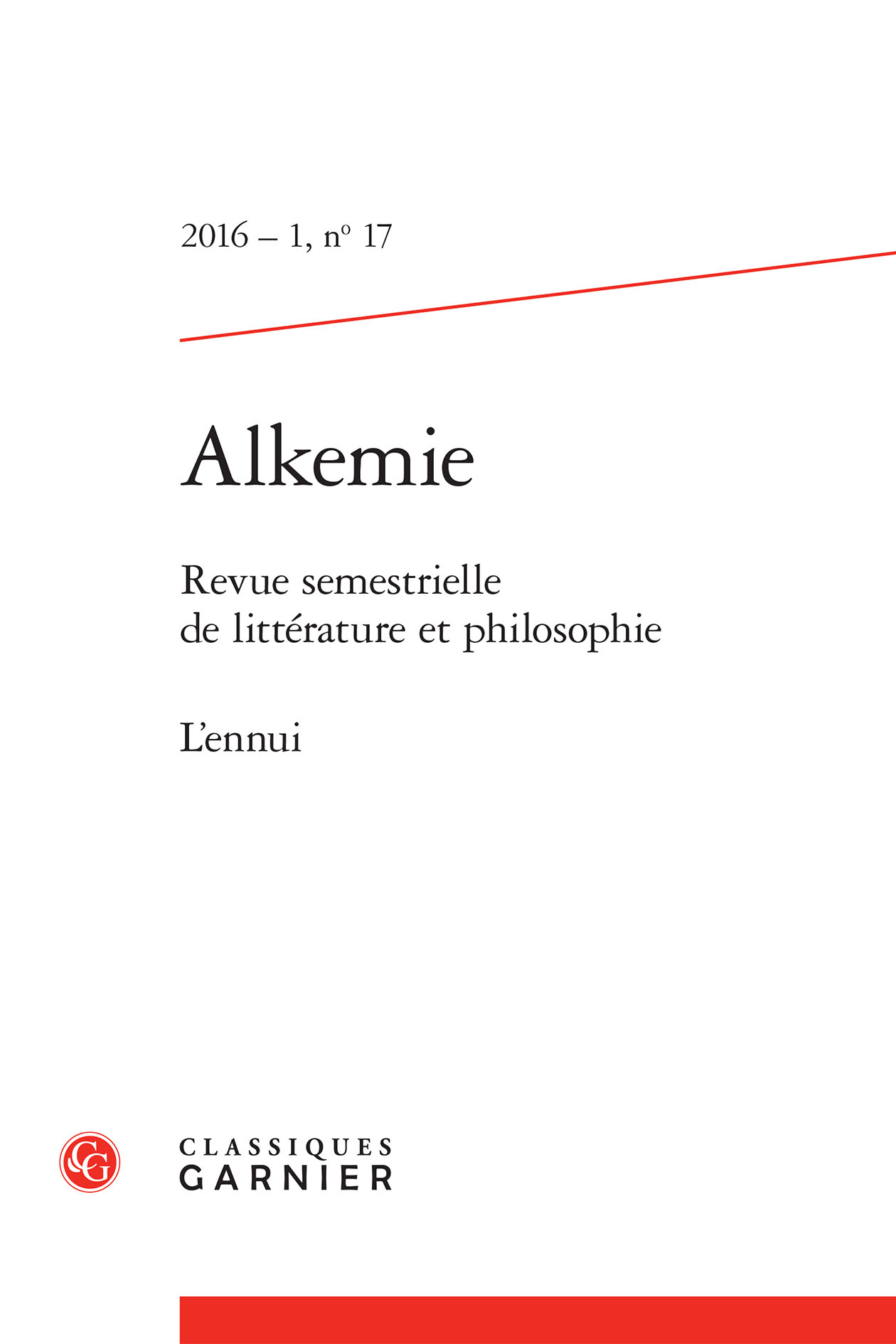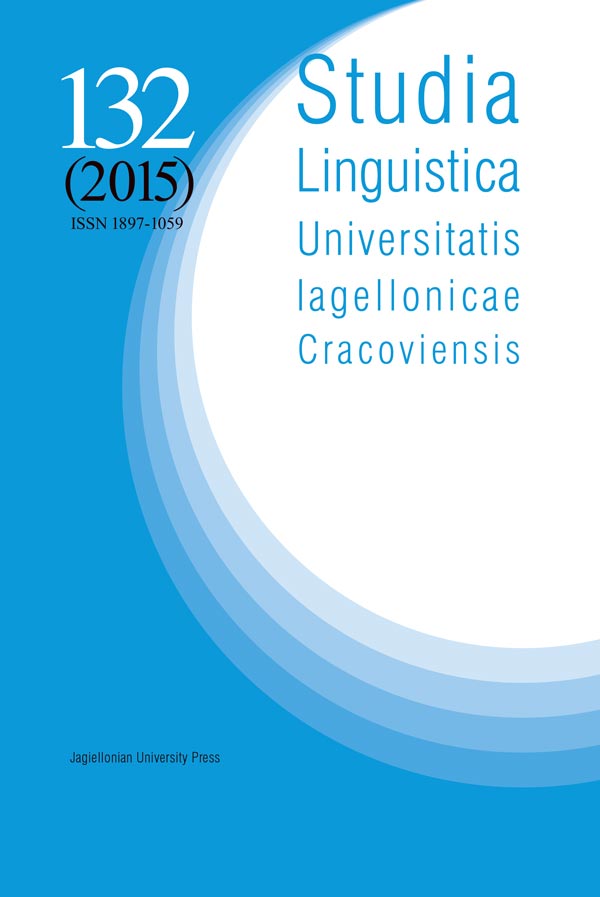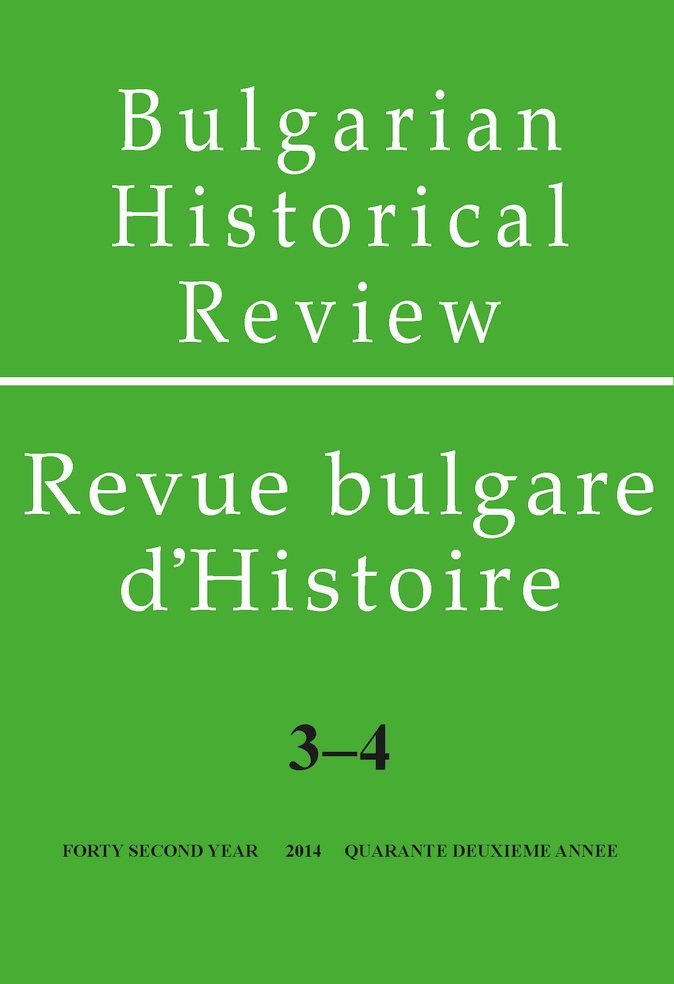
We kindly inform you that, as long as the subject affiliation of our 300.000+ articles is in progress, you might get unsufficient or no results on your third level or second level search. In this case, please broaden your search criteria.


Ce texte est une plongée au coeur d’une situation à la fois inconfortable et invraisemblable. Pour tenter de la décrire au ras du réel, le scribe s’estimposé dese soumettre volontairement à divers désordres et perturbations qui concernent la logique, la syntaxe et la ponctuation, bien qu’il ait en grande estime la cohérence qu’exige la langue utilisée. This text represents a dive at the centre of a situation which is both uncomfortable and incredible. Trying to describe it as a reality, the scribe imposed on himself to voluntarily obey diverse disorders and perturbations of the logic, the syntax and the punctuation, even though he has a high respect for the coherence of the language employed.Keywords: big gap, future, past, scribe.
More...
Ciprian Vălcan nous propose de nouveaux exercices de sarcasme, en s’amusant des diverses hypostases de la suffisance de la nature humaine. Ciprian Vălcan invites us to new exercises in sarcasm by playing with a humorous look at various instances of arrogance, seen as characteristic of human nature.Keywords: Cioran, crook, communism,Lenin, dictatorship, master, dogs,Schopenhauer, Hegel, monster.
More...
Les causalités multiples de l’ennui s’inscriventsur un axe binaire, celui d’une double relation entre le sujet et l’objet, entre une histoire individuelle et collective. Les données subjectives semblent le plus souvent indissociables des représentations et des conditions du milieu. Si l’ennui ordinaire a pour couleur la grisaille, les images qui qualifient l’ennui profond présentent un caractère hyperbolique. Mais on fait le pari de la possibilité d’un ennui positif capablede lutter à la fois contrela morosité ambiante et une disposition à la tristesse. The multiple causalities of boredom are inscribed in a binary axis, the one of adouble relation between subject and object, and between personal and collective history.The subjective data seem often linked to representations and background conditions.If ordinary boredom is grey colored, profound boredom is represented with images of a hyperbolic nature. However, we lay a bet on a positive boredom capable of fighting against both the moroseness and a tendency to sadness.
More...
Face à l’ennui, qui consiste dans une absence de but pour la volonté, l’art permet de s’occuper et donc non seulement de tromper l’ennui, mais aussi dese donner un objet qui ne s’épuise pas comme dans la satisfaction ordinaire du désir. Par un rapport esthétique et non pratique, l’oeuvre met entre parenthèse les soucis de l’existence.Or, l’art ne conduit-il qu’à se consoler d’une existence comprise comme un perpétuel tourment, ou ne permettrait-il pas d’intensifier l’existence? Loin d’anéantir le désir, il serait plutôt un moyen de s’opposer à une existence monotone et répétitive et donc d’échapper durablement à l’ennui à travers une exaltation de la volonté. As boredom can be defined as an aimless will, art can appear like a solution that gives an occupation and permits not only a distraction from boredom but also gives to the desire an object that does not disappear by getting satisfaction. With an aesthetic and not a practical way to see reality, art suspends the existence’s worries. But is art only to get us over the endless agony of life or does it also allow us to increase the intensity of life? Instead of annihilating desire, art could be rather a way to contest a monotonous and repetitive life and get durably over boredom through an exaltation of will.
More...
Je me propose de rendre compte de l’ennui existentiel comme expériencelimite de la perte, de l’absence et du vide. Sous cet angle, je montrerai que les frontières auxquelles nous pousse cette triple expérience-limite mettent en jeu deux figures opposées et extrêmes de la pensée : celle du néant, certes, mais aussi celle du tout, l’une imbriquée dans l’autre, ce qui me permettra de mettre en lumière une façon synthétique de voir l’ennui existentiel. J’en tirerai, en conclusion, une éthique de l’ennui. In this paper, I propose an understanding of existential boredom as the limit experience of loss, absence and emptiness. From this point of view, I show that the borders to which we are pushed by this triple limit-experience bring into play two opposed and extreme forms of thought: that of nothingness, certainly, but also that of the whole, nothingness being essentially connected with the whole. In so doing, I attempt to bring into light a synthetic manner of interpreting existential boredom. On this basis, I conclude by proposing an ethics of boredom.
More...
L’ennui conduit-il à la barbarie ? C’est hanté par cette question et cette intuition que G. Steiner écrit Dans le Château de Barbe-Bleue. Peut-on concevoir les rapports ennui/barbarie sous l’angle d’un rapport de causalité ? Épistémologiquement parlant, peut-on expliquer les camps du XXe siècle parle spleen si tangible dans la littérature européenne du XIXe siècle ? Might we conceive of the relationship between boredom and barbarism as one of causality? From an epistemological point of view, could we explain the 20th century camps with the spleen that is so tangible in 19th century European literature ?
More...
Le Désert des déserts de Wilfred Thesiger est un ouvrage fascinant. Il y a un paradoxe étonnant entre la passion de l’explorateur pour le désert d’Arabie et l’ennui qui surgit dans certaines circonstances, lorsque le voyage devient plus facile, lorsque le danger de mort (de faim, de soif) s’éloigne. The Arabian sands by Wilfred Thesiger is a fascinating book. There is a contradiction between the passion of the explorer for the Arabian desert, and the feeling of boredom which appears in precise circumstances: as soon as the journey gets easier and when the danger of dying (because of hunger or thirst) vanishes.
More...
Cette étude présente le thème de l’ennui féminin à travers les oeuvres Corinne (1807) de Mme de Staël et Indiana (1832) de George Sand. L’auteur analyse en quoi consiste le problème du taedium, quelles en sont les causes et les conséquences et pourquoi la femme (les personnages féminins, leurs auteurs et la femme en général) est plus susceptible de le souffrir. Cela permettra de réfléchir sur la condition de la femme et son rôle dans des sphères sociales, politiques et artistiques. This study presents the theme of the feminine boredom in the works Corinne (1807) by Madame de Staël and Indiana (1832) by George Sand. We will analyze the possible causes and consequences of taedium and why women (the female characters, the authors and woman in general) are more likely to suffer from it. This will enable to reflect on the female condition and role in the social, political and artistic spheres.
More...
Cet article porte sur les ravages de l’ennui dans quelques romans de Julien Green (Mont-Cinère, Adrienne Mesurat, Minuit, Le Malfaiteur). Dans un quotidien émaillé de vide, le personnage greenien peine à être : l’ennui l’a privé de toute volonté, le contraignant à l’impuissance et à la passivité. Parce qu’il promène un regard désenchanté sur un monde vide de sens, le personnage greenien est condamné à sa solitude. C’estla solitude intériorisée d’un être forcé de vivre avec lui-même. Exister est synonyme d’angoisse: le personnage est emprisonné dans un corps et un temps engluant. Il ressent l’angoisse du vide qui caractérise tous ses gestes, menace effrayante d’une absence d’avenir, mais aussi prise de conscience de sa finitude. Aussi la folie est-elle l’aboutissement logique d’un ennui devenu pathologique. This article covers the ravages of boredom in a few novels by Julien Green (Mont-Cinère, Adrienne Mesurat, Minuit, Le Malfaiteur). The characters whose daily life is empty, struggle to be. Boredom has deprived them of all will power leading them to powerlessness and passivity. Because they look out with disillusionment over a meaningless world, the Greenian characters are condemned to the internalized loneliness of beings compelled to live with themselves. Their life is anguish: the characters are trapped in their body and the bogging down of time. They feel the anguish of emptiness in all their actions and the absence of any future, which becomes a dreadful threat,but they are still aware of their own finitude.Key words: boredom, Julien Green, loneliness, anguish, time.
More...
The aim of this paper is to rescue the reputation of the much-maligned seventeenth-century English lexicographer Edward Phillips. He has been accused of plagiarizing in his dictionary called New world of English words (1658) from an earlier dictionary, Thomas Blount’s Glossographia (1656), and he has been accused of claiming misleadingly that his dictionary was enriched by the contributions of consultants. Both accusations were originally made by Blount. Examining them both – which requires the use of techniques from the history of the book and the social history of science and technology – leads to the conclusion that neither accusation is true, and that Phillips actually made multiple original contributions to the development of the English lexicographical tradition, particularly in the use of consultants and the handling of technological vocabulary.
More...
Now that printed books are being replaced by online materials, it is especially important to agree on the format of the etymological dictionary of the future. It seems expedient to discontinue the publication of dictionaries that contain minimal or no new information, for the public already has more than enough of them. The profession needs exhaustive (ideally annotated) bibliographies of everything ever published on the origin of every word in the language under study. Of great use can be thematic etymological dictionaries, such as dictionaries of presumably native words in a given language, of borrowings, of slang, of regional words, etc. Only the languages that have never been the object of sustained etymological research require general dictionaries of the type once produced by Skeat, Kluge, and their peers.
More...
The present paper is a contribution to the history of Polish-English and English-Polish lexicography. It aims to throw some light on two bilingual dictionaries compiled by Ludwik Krzyżanowski, which have so far been shrouded in mystery. Fonds no. 49 deposited in the New York archives of the Polish Institute of Arts and Sciences of America (PIASA) provide archives in New York provide valuable data on the author and his scholarly activity, as well as a tiny part of a dictionary typescript that allows for a preliminary assessment of the lexicographic endeavour.
More...
Bernardo da Parigi’s Vocabolario Italiano-Turchesco (1665) is a huge three-volume dictionary that unfortunately has been virtually ignored by studies on Ottoman lexicography so far. This paper focuses on a number of words recorded by Bernardo which are particularly interesting from a historical-lexicographical viewpoint, such as European loanwords not attested elsewhere or presenting noteworthy features and Anatolian Turkish words missing in Meninski (1680).
More...
This author’s aim is to show that the general notion “dogmatic dictionary” actually comprises various scholarly etymological dictionaries that should be distinguished from each other due to their different informational potential.
More...

This paper investigates four bilingual English – Upper Sorbian / Upper Sorbian – English dictionaries regarding the presence of Anglicisms therein. The paper describes the place of Anglicisms in the macrostructure of the lexicons as well their treatment within entries either as headwords or counterparts. The paper enumerates their numerical presence as well as the types of borrowings, and the other processes responsible for enriching the lexis of Upper Sorbian with English lexical elements as revealed in the dictionaries. The paper discusses the information regarding the adaptation of English lexical items in Upper Sorbian (phonetic, graphic, morphological and semantic) that can be obtained from the lexicographic works.
More...
Cette interprétation du Sonnet en x, qui mobilisera toutes les ressources(commentaires et éclairages donnés par Mallarmé) existantes, s’acheminera progressivement de la tentative de résolution d’une énigme (constituée par le raffinement lexical, les accidents déroutants de la grammaire et le sous-texte mythologique) vers la compréhension du poème comme description d’une scène intérieure, et exécution d’une partition intérieure. Mots-clés : Graal, Styx, or, étoile, Phénix. This reading of the Sonnet en x relies on all the existing sources, including Mallarmé’s own commentaries and explanations. It progressively goes from attempting to solve an enigma (made of lexical refinement, puzzling grammatical accidents and mythological undertext) to read the poem as a description of an inner scene and playing of an inner score.
More...![« La philosophie antique, […] devrait encore rester
une école de vie, de toute première importance,
de tout premier plan, de tout premier choix. »
Entretien avec Marie-Hélène Gauthier](/api/image/getissuecoverimage?id=picture_2016_26738.jpg)
